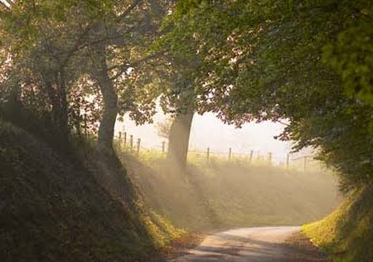French Country Travel Life Retirement

French Country Travel Life Retirement. Definitely what DA BG had in mind when he first starting exploring these fab shores. But, alas, a zillion years later, tho’ living the French Country Dream Lifestyle (fresh bread every morning, wine by the litre) retirement is not yet in my cards. Still too many Treasures of France for me to discover. And share with you, bien sur!
But if you’re in the fortunate position of actually being able to contemplate French Country Travel Life Retirement – and more to the point – if you’re prepared to act on that contemplation……then cast yer eyes on the following inside scoop from my travelling /scribbler colleague Kathleen Peddicord :
“One corner of France is so tucked away that even the French find it hard to place on a map. The Béarn region has a long and colorful history, from Roman times to the Renaissance to the days of Belle Époque and then Art Deco. This lovely region is often overlooked by foreigners, even though the locals are very welcoming of newcomers.
This land of rolling wooded countryside, friendly people, and delicious wines and food is also notable for another reason: It qualifies as one of the most appealing and affordable retirement choices in all of France. This is a region of France where a retiree on a budget of as little as $2,500 per month could consider settling down to enjoy the best of French country life.
The Béarn region is the birthplace of a great French king and a one-time seasonal favorite locale for royalty of all nations. It was once named as “the center of the sporting world,” and is home to the first-ever Grand Prix and the Wright Brothers’ flying school.
The Béarn area is also where Napoleon founded the first national stud farm and the British designed beautiful gardens and parks. Rightly proud of its past, this area has also embraced the present and now has impressive 21st century architecture, technology parks, sporting facilities, and a trailblazing communications infrastructure.
The Béarn region is located in the northwestern corner of the Pyrenees-Atlantic department in the region of Aquitaine in southwest France. The majestic mountains of the Pyrenees dominate the views, and beautiful beaches are just a short drive away.
There is 3,000 meters between the highest point in the Pyrenees and the lowest on the Plein de Nay. But despite all this variation in geography, the Béarn has a gentle climate. During the winter months, temperatures hover between 32 and 42 degrees Fahrenheit. Springtime is mild, and summers are generally a pleasant 77 degrees.
The even precipitation and regular sunshine make this a beautifully verdant region and explain the area’s success in agriculture and wine-growing. There is an amazingly wide variation of plant life. You’ll see palm trees swaying alongside pine trees with the snow-capped Pyrenees rising up behind. The capital city of Pau is often called the green city or garden city and has one of the highest ratios of greenery per square meter per person of any city in Europe.
Pau is also sometimes called English city, referring to the English who settled here during and after the Napoleonic Wars. They were generally well-received, as are English-speaking expats today, and left their mark on the architecture, gardens, and parks that flourish still in this city of 85,000.
With so many pretty little towns in the region, it can be difficult to choose a favorite. Morlaas, however, stands out. It is not too big or small and is very welcoming to foreigners and retirees. Plus, Morlaas offers every facility and service you could need, has an interesting historical center, and is set amidst beautiful countryside.
Morlaas lies 12 kilometers to the north of Pau, overlooking the Plain of Pau. To the south are views of the Pyrenees, and to the north the undulating wooded farmland continues on toward Bordeaux, 200 kilometers north. Some 4,100 inhabitants, known locally as Morlanais, live in this town that is connected by bus and road to Pau city center, and it’s just 15 kilometers from Pau airport.
After the Roman city of Beneharnum was destroyed by the Vikings in 840, Morlaas became the capital of the ancient province of Béarn. During that time, it even had its own mint. Money from Morlaas was a sought-after commodity and used in the Navarre region, Aragon, and Italy. Morlaas remained the capital until the 12th century, when Orthez took over. Since 1154, Morlaas has been on one of the St. James of Compostela routes and was one of the original stopping points for pilgrims. Today’s travelers are welcomed at a small dormitory-style resting place or the municipal campsite.
As you drive into town, off to the right is the main sporting area (rugby and soccer), the open-air market, and the farmer’s market. On through toward the main high street you pass centuries-old buildings before coming to the steps of the 12th-century Romanesque gateway of Ste. Foy church. To the side is the main square surrounded by ancient buildings that now house the post office, the Mairie’s office, and the town hall.”
Read More Here.
THROW ME A BONE HERE, PEOPLE!
What are ya thinkin’?

you always have something to remind us that france is more than paris and provence. much appreciated.
sorry to hear DA BG is not yet retired…but obviously you have the next best thing!
yes, harvey, i think you are right. i for one would take his “non-retirement” any day!
sounds like a great idea….now just need to win the lotto!
hey bev…..why not marry a millionaire?..quicker and guarenteed results!
you’re right andrea……..did it work for you?
chock full of information..very helpful. (and inspiring….)
had no idea about this region before..thanks so much for putting me (almost) in the picture! (lol!)
don’t you ever stop? another great post filled with actionable info. what a concept. luv ya BG!
just fascinatin’ stuff….as usual from DA BG…soooo lucky to have you! don’t go away and retire!!!